20 Foods to Buy at the Farmers Market This Fall
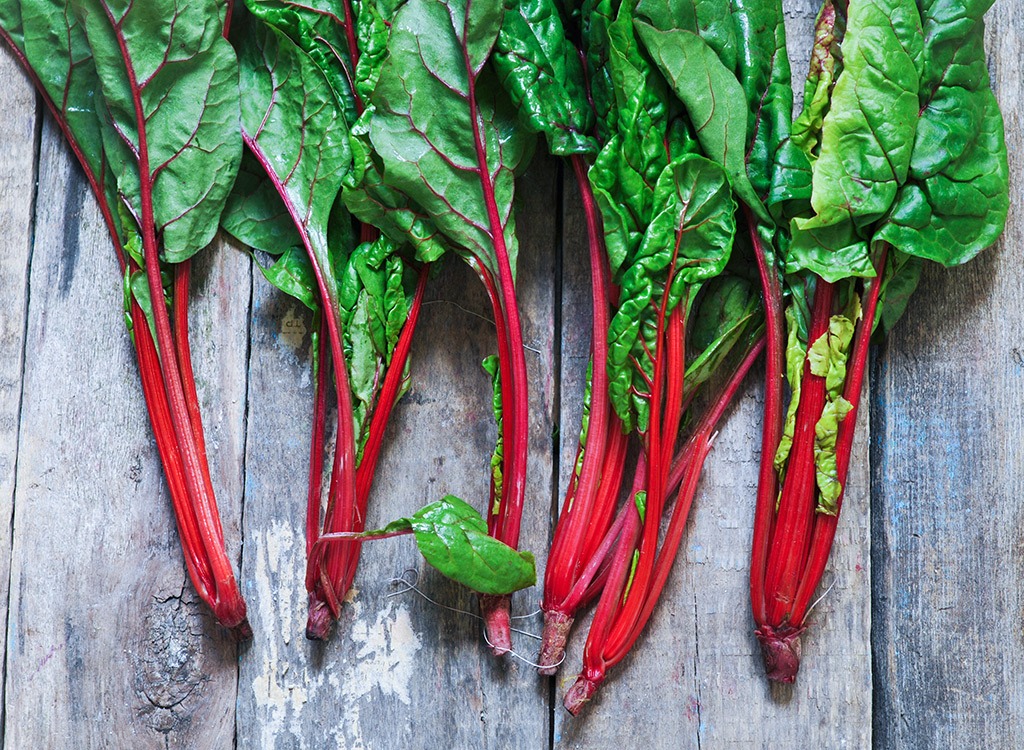
While pumpkins and apples are two classic examples of fall fruits, they’re certainly not alone. Eating seasonally is an underrated concept to Americans, seeing as supermarkets supply a multitude of produce year-round, no matter if it’s that particular food’s season to flourish or not. Quite frankly—more often than not—conventional produce (which means non-organic produce that’s offered in the grocery stores) doesn’t taste nearly as flavorful as those that are grown by a farmer within your community. That’s because produce in big chain grocery stores is often sourced from states away. As a result, it has to travel many miles and sometimes days on a truck, just to get on the shelves where it may spend up to another week before someone buys it. In the end, all of this time sitting out not only robs it of its flavor, it also diminishes its nutritional content.
Instead of succumbing to the convenience of having certain foods all year round, shake it up by making time to visit your local farmers’ market and eating produce that’s actually meant to be grown, harvested, and consumed in that season. Eat This! has made a list of just 20 of the many fruits and veggies that are in their prime during the fall—so get an armful of ’em during your next trip while you’re also picking up these 30 Best Ant-Inflammatory Foods!
Green Beans

Whether you chose to eat them raw and crisp or cooked with a savory blend of spices in a succulent stir-fry, you’re bound to be satisfied with locally-sourced, in-season green beans. Read up on 17 Good-For-You Green Bean Recipes to get an idea on how you can incorporate the vegetable into your next meal. But hurry; this food’s season actually comes to a close by the beginning of October!
Sweet Potatoes

Not only can sweet potatoes thrive in a savory dish with spices like dill, black pepper, and oregano, it also tastes incredible when its sweet side is accentuated with creamy almond butter, a dash of cinnamon, and topped with a drizzle of honey. No matter how you dress it (or leave it as is), one thing is for certain: It is chockful of nutrition, especially beta-carotene. Beta-carotene predominantly keeps your immune system strong and helps to maintain optimal vision. Psst! Always pair this antioxidant-abundant sweet potato with a healthy fat such as a nut butter or olive oil to ensure that your body is actually metabolizing the beta-carotene. You don’t want all of those benefits to go to waste! Sweet potatoes are in season from September to December, so you have plenty of time to reap their benefits.
Pumpkin

Going to the pumpkin patch with your family in the fall is a pastime that some treasure from their childhood. I remember thumping several pumpkins with a triumphant flick of my index finger until I found the one or two that I could take home and decorate or carve; it’s one event in the fall that, to this day, simply can’t be matched. At the time, I did not eat make it a point to eat anything with pumpkin because I saw it as a decoration. Now, as an adult, I carve the pumpkin and eat its insides, too. For meal inspiration, check out 20 Healthy Pumpkin Recipes for Weight Loss!
Delicata Squash
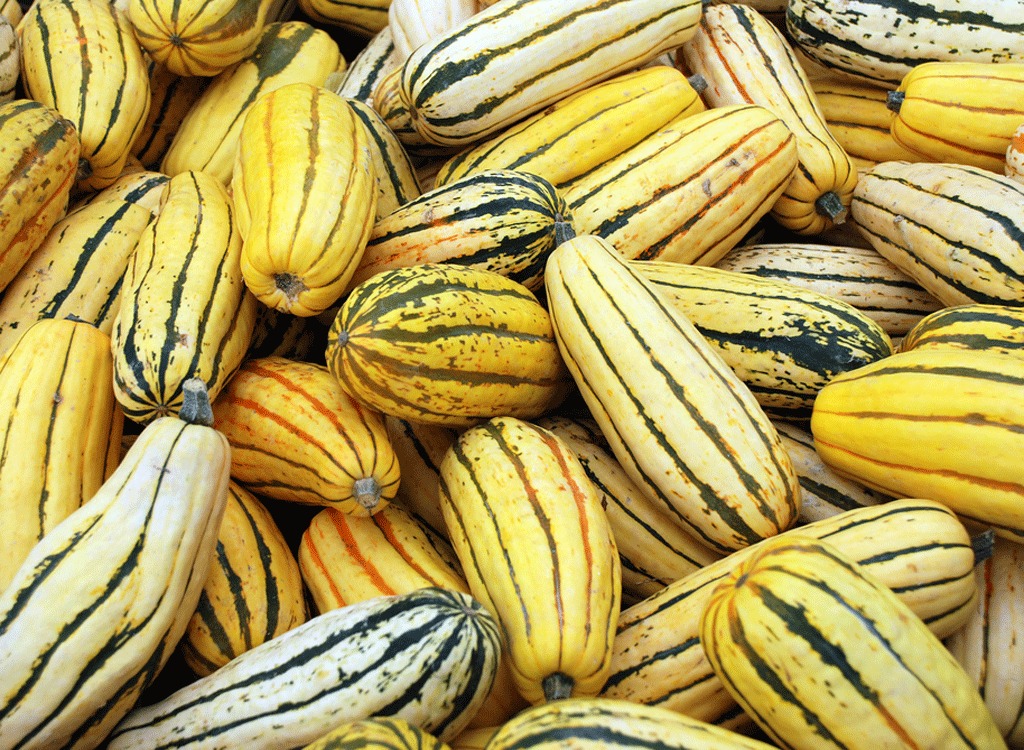
This intricate squash is the perfect go-to Thanksgiving side dish for people who are trying to cut down on their carbohydrate intake. One ¾ cup serving only costs you 30 calories and just 7 grams of carbs. Talk about a low carb snack! Make sure to pick a squash that is fully ripe so that vitamins A and C have had the time to develop. You’ll know when it’s ready to eat by its distinctive design; seek out ones that have a yellowish, cream color with green striations along its rind.
Acorn Squash
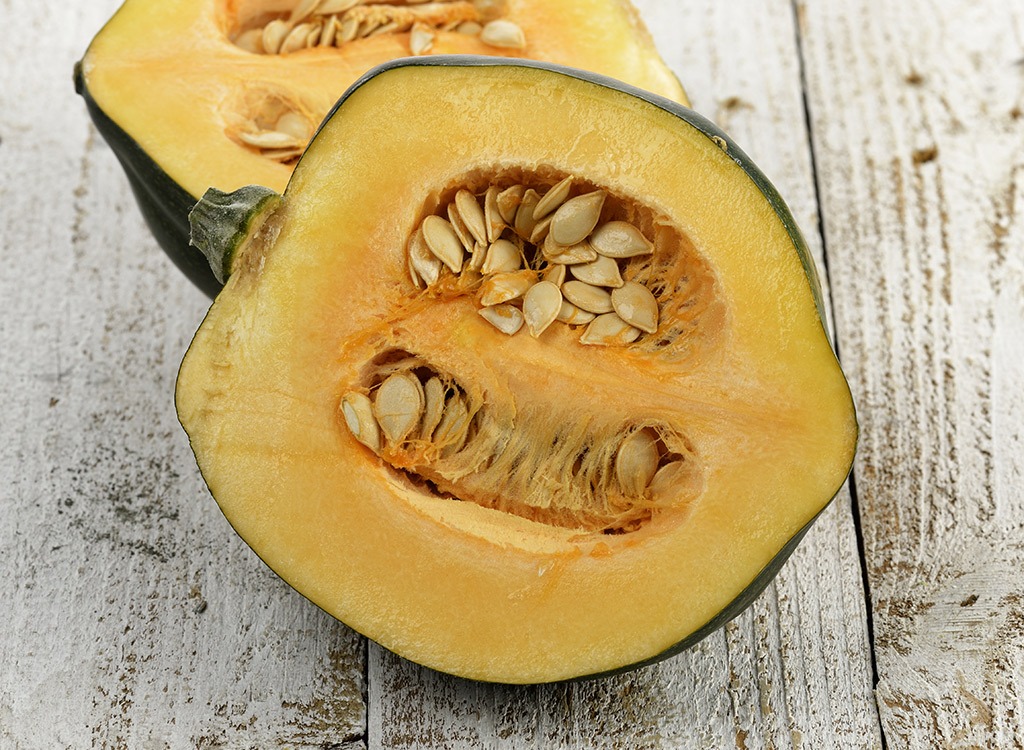
This little round squash may be small, but it certainly is loaded with flavor. Not to mention, it’s very easy to prepare! Simply spoon out its core, coat with olive oil and spices of your choice, and then plop it in the oven face up at 350 degrees Fahrenheit for 30-40 minutes. Pair this fall favorite with one of these healthy chicken recipes to make this meal complete!
Butternut Squash

Sweet, buttery, low carb, and filling. This is one item that farmers at the market always have an abundance of simply because they go quick! Ranging between $1.50 and $3 (depending on its size), this squash has one of the highest sources of a rare antioxidant called beta-cryptoxanthin. According to a study conducted by the University of Manchester, a diet rich in the antioxidant significantly reduces your likelihood of developing arthritis in the future.
Swiss Chard
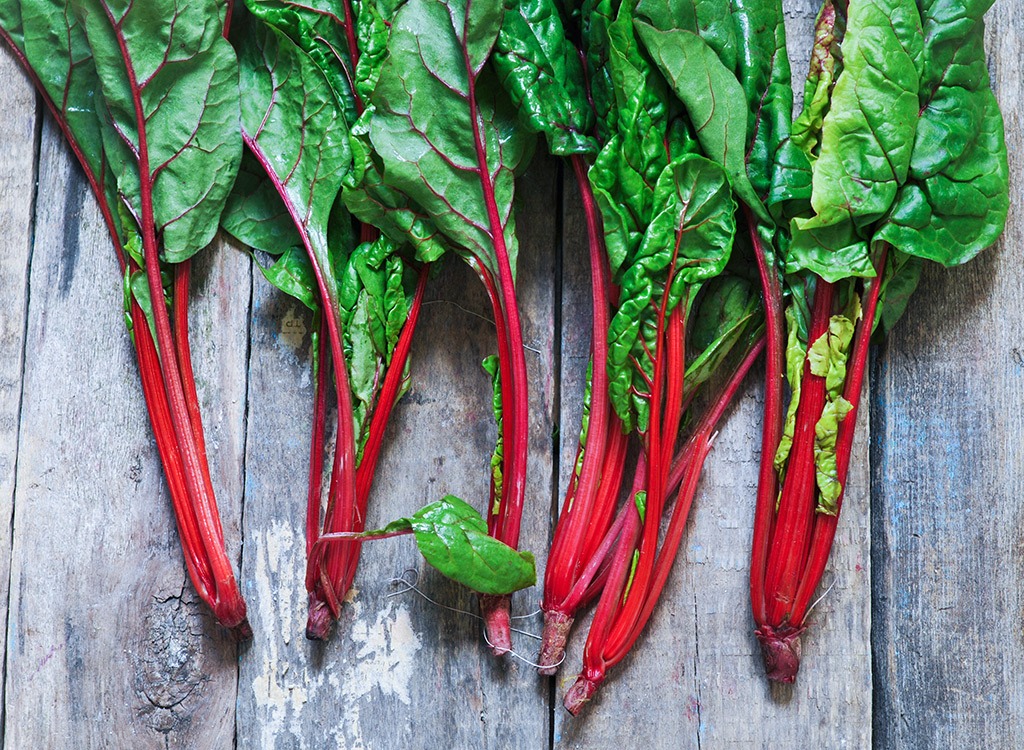
This leafy green has similar benefits as beets, with its extraordinary content of betalains. However, it also contains a whopping 12 other phytonutrients that work as antioxidants in the body! Additionally, just one cup boiled yield 636 percent of your daily needs of vitamin K, which isn’t too far behind kale‘s impressive content of 1,180 percent of vitamin K per cup. For best flavor, dress a stalk in olive oil, garlic, and onion and place it on a medium-high skillet for 3-4 minutes and then let simmer for an additional 5 minutes to let the flavor soak in.
Mushrooms
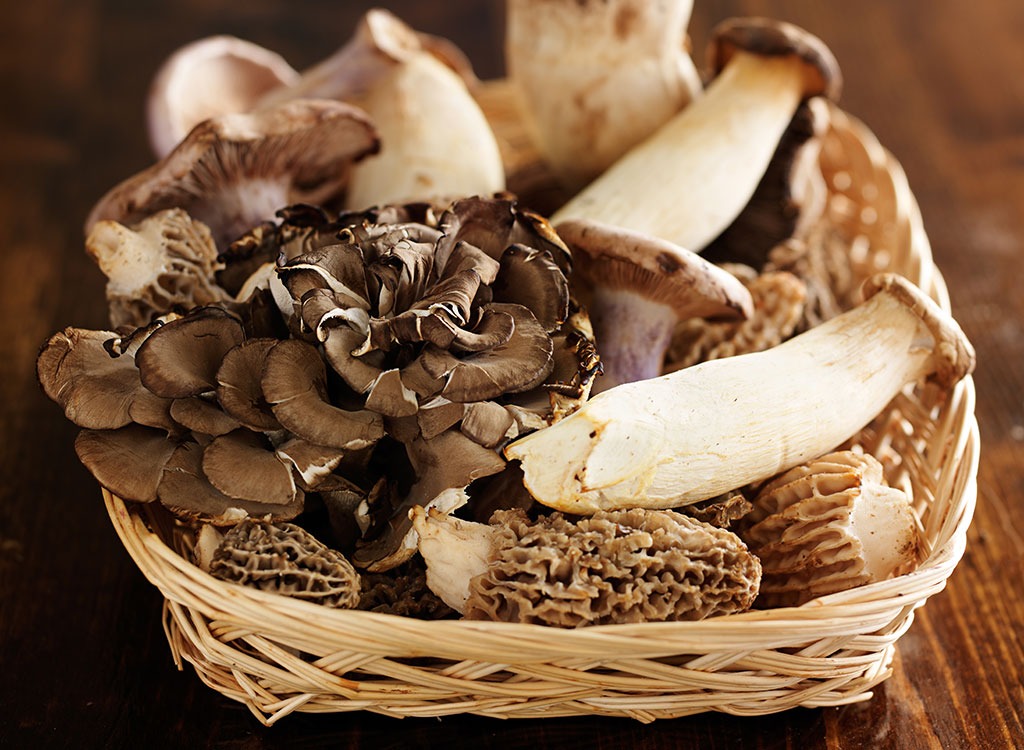
One of the most delicious add-ons to a quinoa bowl recipe are sauttéed mushrooms with fresh scallions. Add light coconut milk to the mixture and you’ve created a dish that will be hard not to scarf down. Just remember to eat slow and savor its immense flavor! Like beets, mushrooms are also cultivated year round seeing as they can be grown indoors as well on wooden logs and kept at a controlled temperature.
Pears
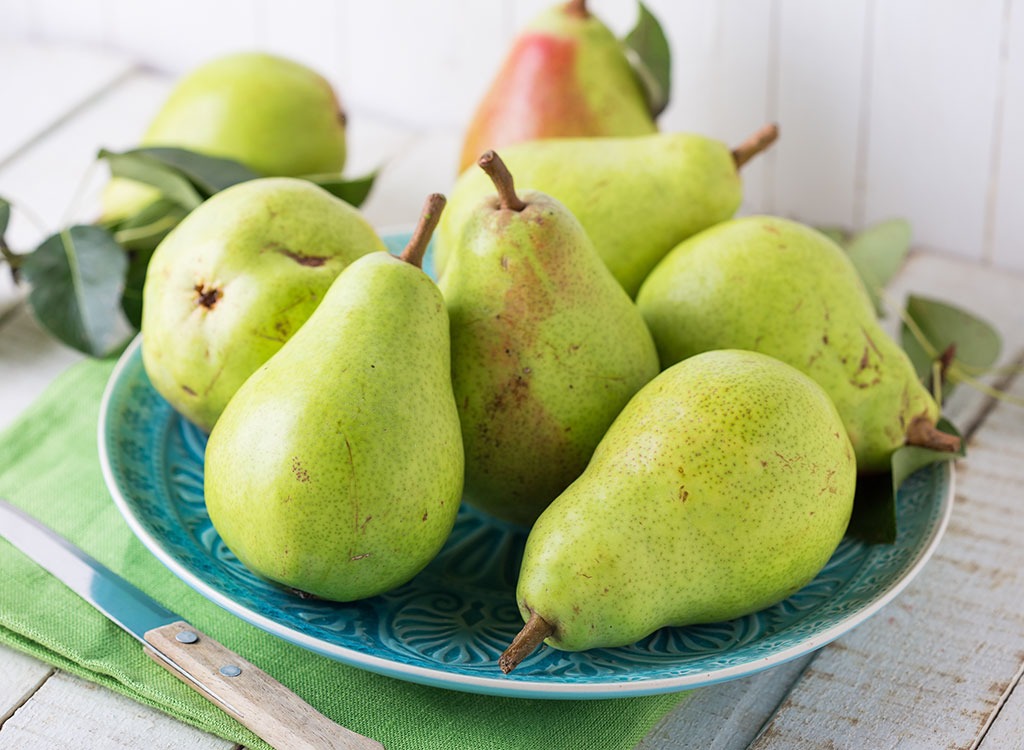
If you’re looking to spruce up your chia pudding then slice up a juicy pear to dip in. Have you ever thought of using fruit as a spoon? If not, consider yourself informed! This fall and winter fruit also tastes incredible when roasted with maple syrup, cranberries, coconut shavings, and almonds.
Ginger

Some of the most effective kinds of detox tea include ginger in it because of the root’s medicinal properties. Just to name a few, ginger helps to reduce gastrointestinal with its ability to relax and soothe the muscles within the intestinal tract, it prompts the elimination of gas, reduces inflammation in cumbersome joints, and even helps feelings of nausea subside. Be on the lookout for this precious root during the months of August through November.
Kale
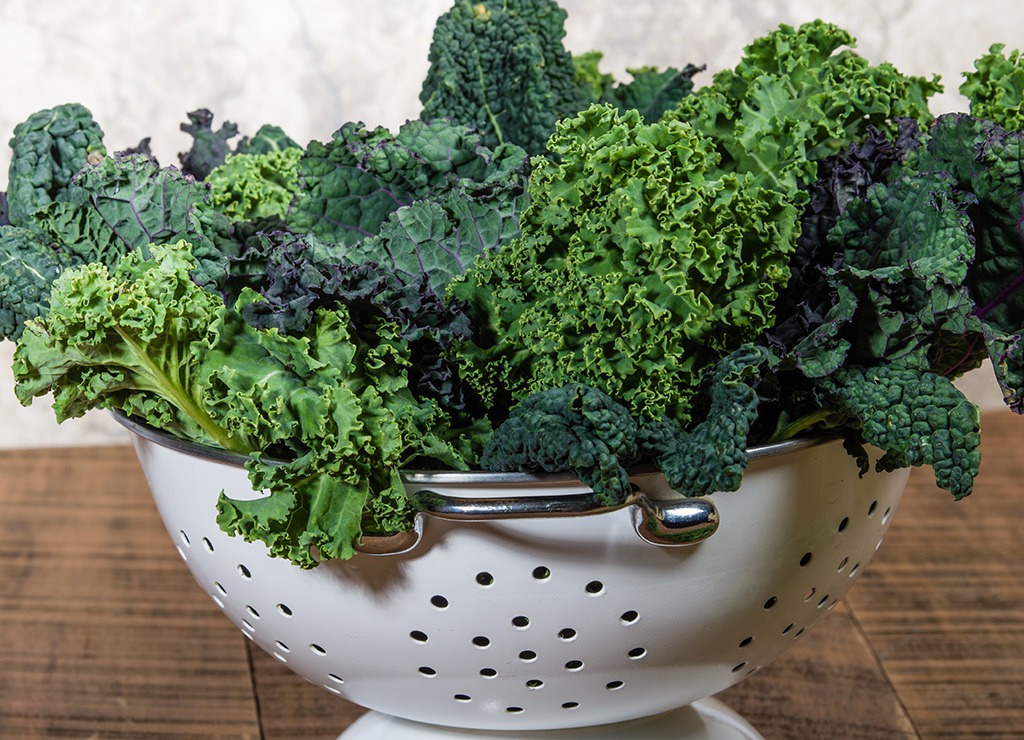
By this point, you’ve read about kale in dozens of health-related articles; so, instead of pushing more information about the nutritionally-dense green on you, we at Eat This! would rather you learn what to mix it with. Check out smoothies for weight loss to find out exactly what we’re talking about, oh and make sure to stock up on a bundle of the leafy green next time you go to the farmers’ market!
Salsify
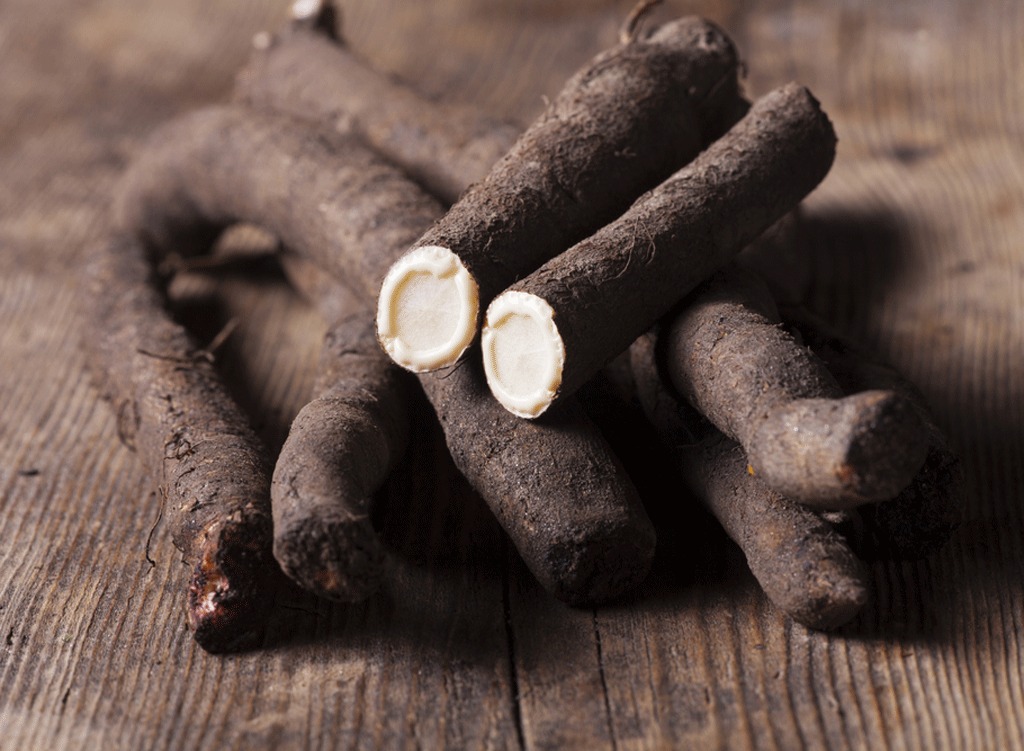
What in the heck is salsify, you say? This root vegetable is definitely not as common as the cucumber and head of broccoli, but it’s not too late to introduce it into your diet. In fact, it’s known as the oyster plant because of the way it resembles the taste of an oyster when it’s cooked. Like other root vegetables, salsify works well in soups and stews. It’s no wonder why its season falls between September and December; it truly makes for a great addition to a bowl of warm, creamy soup during the colder months.
Kohlrabi
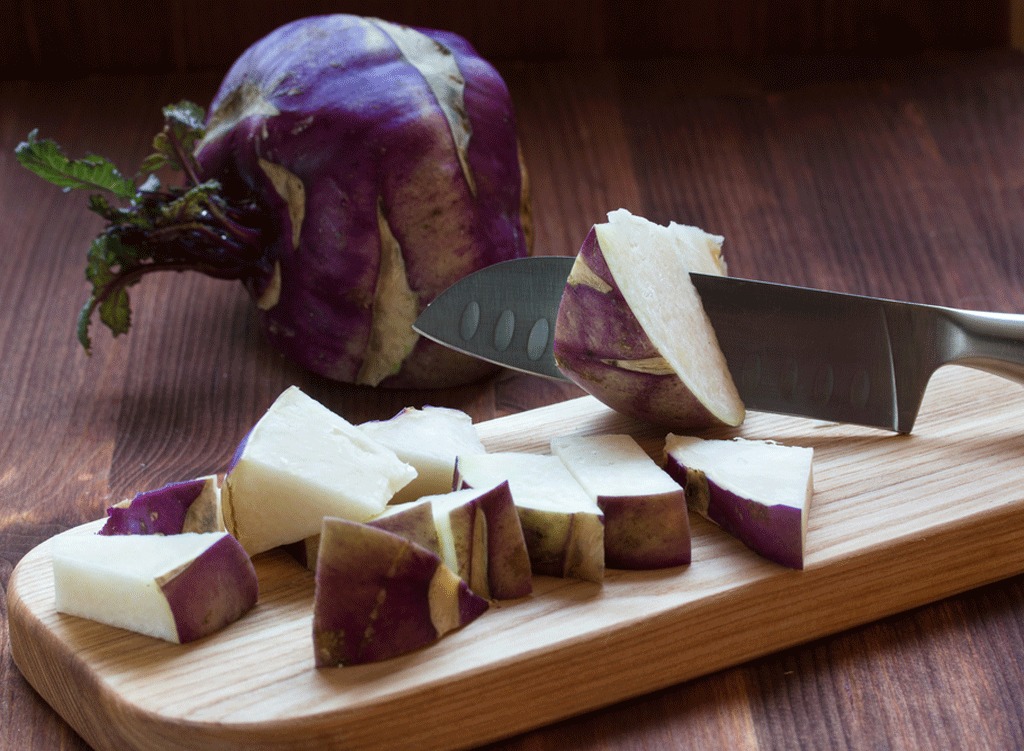
This is another vegetable that isn’t well known but certainly should be talked about, especially with its potassium content. The taste of kohlrabi is similar to that of a broccoli stem, but it’s actually most closely related to cabbage. Regardless of what veggie it’s most alike, kohlrabi shines on its own and even supports your metabolism with its rich source of B vitamins.
Honeycrisp Apples
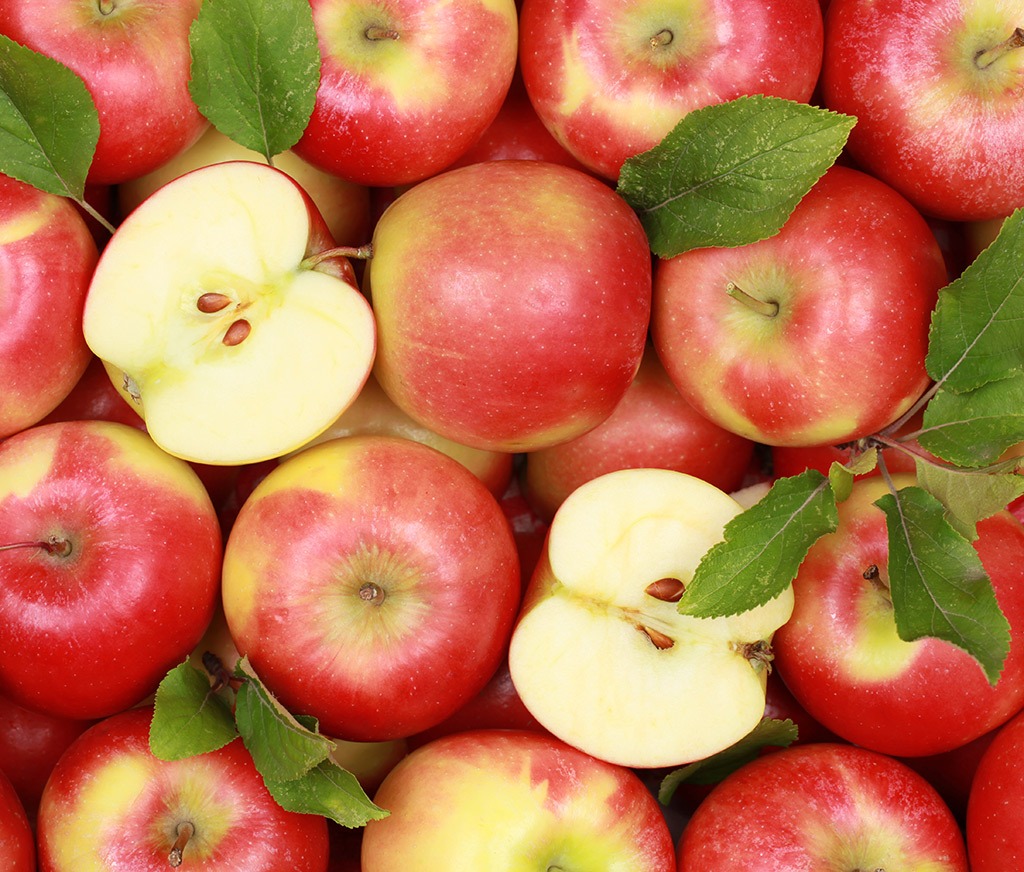
Similar to pumpkins, apple picking is also a childhood memory worth revisiting. Make sure to enjoy the season of juicy, honeycrisp apples during its window of harvest in the fall!
Grapes
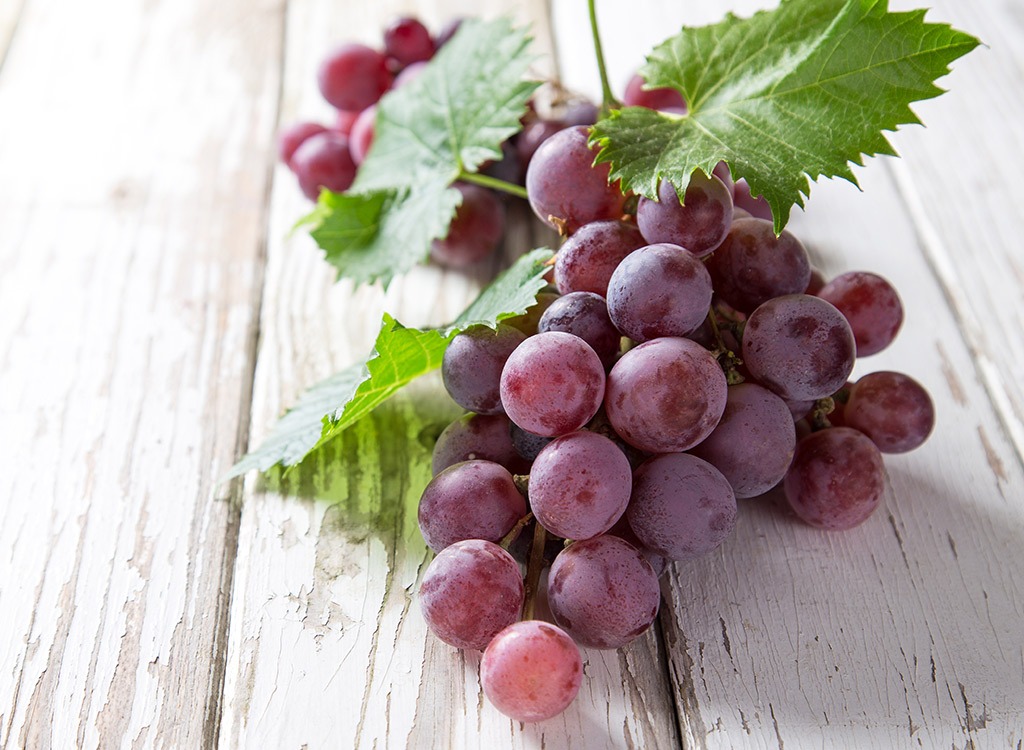
You may not have known this as a kid, but eating copious amounts of juicy grapes throughout the years actually helped promote longevity. Research has shown that resveratrol, a phytonutrient that is most widely found in the grape’s skin, is known to increase the expression of three specific genes which are related to longevity. If that doesn’t inspire you to increase your intake of the sweet stuff, we don’t know what will!
Beets
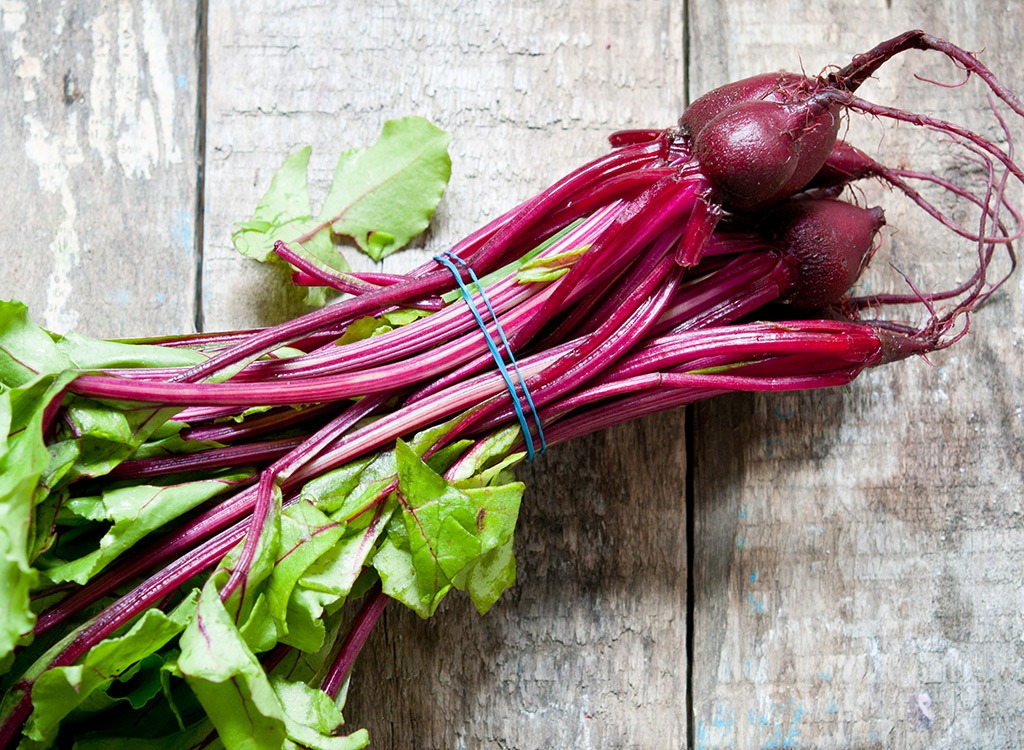
Beets are among the original list of superfoods—and for good reason. For starters, beets are comprised of a cluster of betalain, which is the element responsible for giving the beet its red pigment. This class of phytonutrients works to provide the body with antioxidants, reduce inflammation of muscles, and even has detoxifying capabilities. The best part? Their season never ends; they’re one of the few foods that have the ability to grow throughout all 12 months! If you’re looking for more ideas on how to include beets and their greens into your diet, check out 13 Ways to Cook with Beet Greens and Beet Root!
Bitter Melon
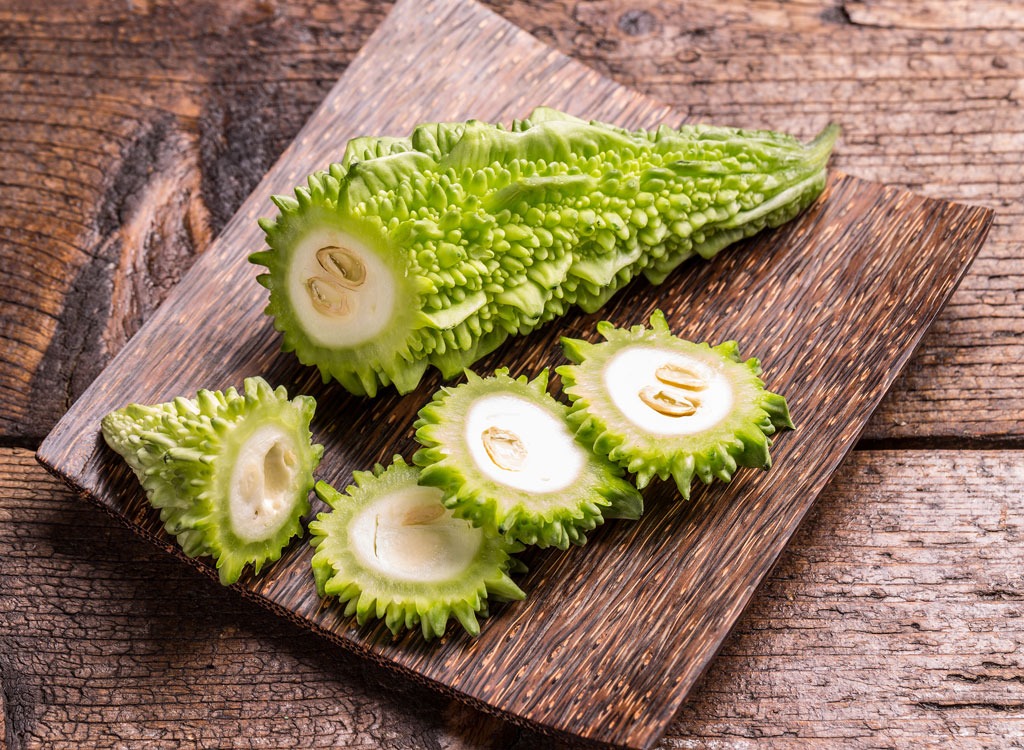
If you’ve never heard of bitter melon, make sure to become familiar with it, especially if you have type 2 diabetes— this fruit is actually known to treat it. Yep, that’s right. The fruit contains polypeptide-P, a phytonutrient that lowers blood glucose levels in addition to charantin, which is a compound with hypoglycemic properties. Its season spans from June to November, so you still have plenty of time to get your hands on this miraculous fruit.
Turnips

Did you know that turnips have one of the highest levels of a chemical called glucosinolates? According to a study, it’s been reported that this chemical is known to reduce inflammation in the prostate, which prevents the organ from developing cancer. Make sure to invest in this underrated veggie during any of the 12 months!
Rutabaga
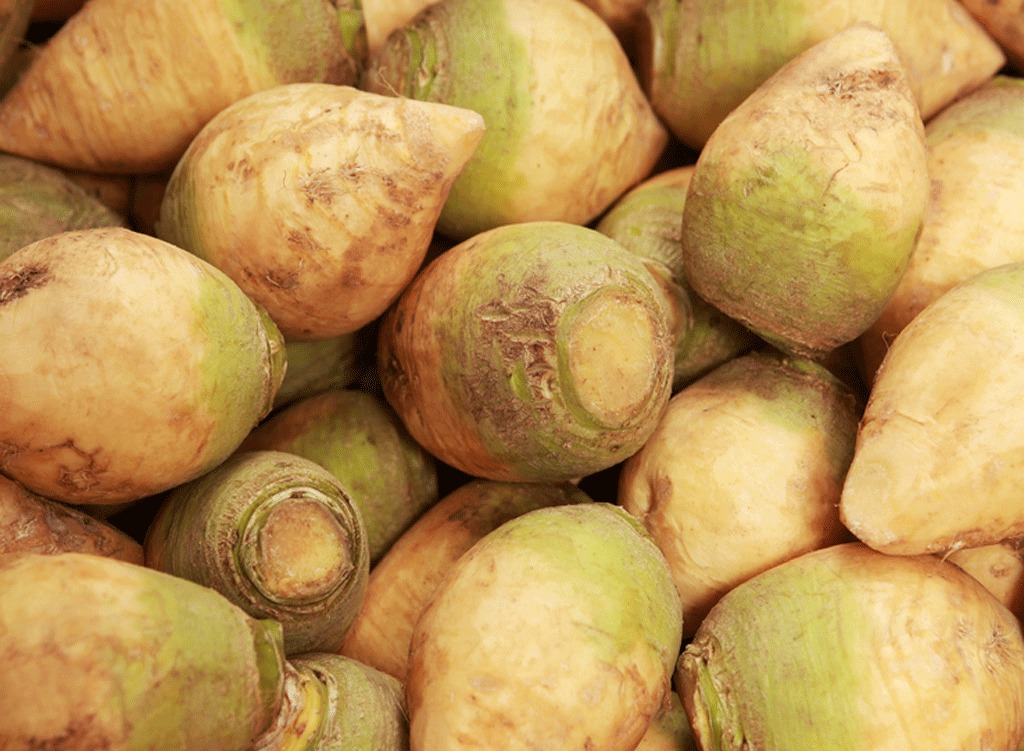
Interested in upping your soup recipes while lowering your blood pressure this fall? Then drop the pills and start and roasting some rutabaga; this cross between cabbage and turnips fulfills both of those desires. Its potassium content helps to lower blood pressure by reducing the stress and contraction of blood vessels, which enables blood to pass through them with ease while also inducing greater oxygenation to vital organs.
Fennel

Last but not least, fennel is another unspoken delicacy that really deserves to be in placed in the limelight. Check out number 19 in the 25 Watermelon Recipes You’ll Crave to get an idea of how it can help prevent anemia!